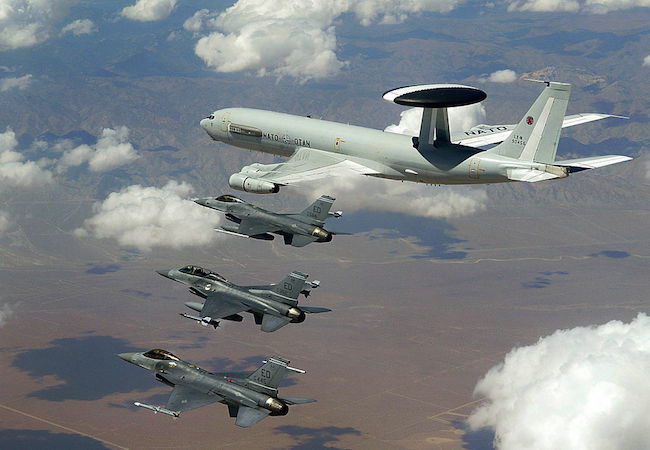NATO to double its reaction force to counter threat of Russian aggression

NATO announced plans to establish six new command posts in Eastern Europe and more than double the size of its reaction force, from the current 13,000 to 30,000.
NATO Secretary General Jens Stoltenberg stated that bolstering of the force was not only due to the threat of aggression from Russia but also to increasing threats from ISIS and its penetration into Europe.
Stoltenberg said that the increase was “the biggest reinforcement of our collective defense since the end of the cold war.” The new force is a response to the ongoing Russian aggression in Ukraine and potential for new conflicts in Eastern Europe. Some of its parts will be able to deploy to a combat zone with 48-hours notice, the rest would follow in a week, Stoltenberg said.
NATO officials plan to set up the new command posts in six eastern member states of Estonia, Latvia, Lithuania, Poland, Romania and Bulgaria. The first three had been annexed by Moscow in 1940 and were a part of the former Soviet Union until 1991. The latter were part of the Kremlin-run Warsaw Pact during the Cold War. All had suffered from Moscow’s policies in one way or another. Soviet tanks stormed the Baltic capitals of Vilnius and Riga in January 1991, and had previously been involved in massacre of civilians in Budapest, Hungary in 1956 and Prague, Czechoslovakia (now Czech Republic and Slovakia) in 1968 which is why many Eastern European states may have legitimate concerns about the potential military intervention at any point in the future.
The six states where the command posts will be set up will house 40-60 officers who will coordinate any deployment of the spearhead force and training.
Russia, in turn, had been beefing up its own military potential and had recently changed its military doctrine implicitly citing NATO’s enlargement as a national threat. Despite the decreased oil prices and falling state revenues, President Putin continued his policies in Eastern Ukraine and countering any actions by the West perceived as national threats to the Russian Federation.
Moscow had also been actively propagating its stance and justification of military expenditures in the wake of inflation and contracting economy by depicting the West as an obvious and active adversary. Russia’s state-run channel Rossiya broadcast a report on the deployment of NATO forces in Europe and potential scenarios how they might strike Russia within a short period of time. Several individuals interviewed in the video report who were said to be military experts discussed the timing and ability of NATO airplanes which would fly nuclear warheads to Moscow and Saint Petersburg.
How weak Russia might turn out to be in the standoff with the West is unknown. However, economic sanctions on Russia and an arms race may have a similar impact on the country as did the arms race that brought down the Soviet Union.
In 2013, deputy Prime Minister of Russian Dmitry Rogozin declared at a conference on national security of Russia that his country would be defeated by the United States within the first 6 hours should the armed conflict ever erupt. He stated then that the United States had been working on blitzkrieg attack which would enable Washington to launch 3.5-4 thousand precision-guided ballistic missiles capable of destroying key infrastructure objects of the enemy within 6 hours, subsequently disabling the enemy from an ability to counterattack. He said that 80-90 per cent of Russia’s nuclear arsenal might be eliminated in such an attack.
It may be hard to decipher if the actions by NATO would lead to a confrontation, but its resolve to counter potential Russian military invasion of Eastern European states is serious. Kremlin, unlike NATO, relies only on its own forces, despite the fact that it created the Collective Security Treaty Organization (CSTO), a dysfunctional organization made up of Russia, Armenia, Belarus, Kazakhstan, Kyrgyzstan and Tajikistan. All of these states are dependent on Russia, either economically or politically. While Kremlin has a political leverage over energy-rich states like Kazakhstan – ethnic Russians constitute one fourth of its population and the talks about autonomy and joining Russia are not rare, – it controls economies of Armenia and Kyrgyzstan.




